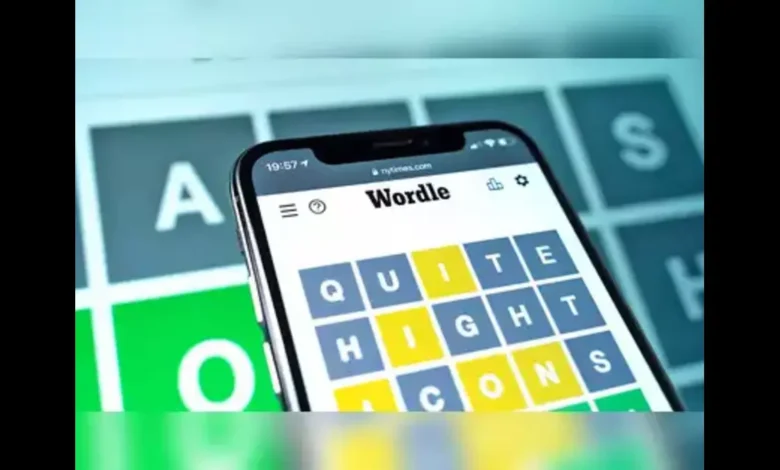Mastering WordleNYTimes: Tips and Tricks for Winning Every Day

Introduction to WordleNYTimes
WordleNYTimes has taken the internet by storm, captivating word enthusiasts and casual gamers alike. Every day, players from all walks of life gather to tackle a new five-letter puzzle, eager to test their wit and vocabulary. Whether you’re a seasoned pro or just starting, mastering WordleNYTimes can be challenging and incredibly rewarding. The thrill of cracking the code in six tries or less keeps us returning for more. But what if you could elevate your game even further? Dive into this blog post as we explore essential tips and tricks that will help you dominate your daily Wordle challenge like never before!
Understanding the Game and Its Rules
WordleNYTimes is a simple yet captivating game that challenges players to guess a five-letter word within six attempts. Each time you make a guess, the game provides feedback on your choices.
If a letter turns green, it’s in the correct position. Yellow means the letter is present but misplaced, while gray indicates it’s not part of the word. This color-coded system adds an exciting layer of strategy as you refine your guesses.
Beyond this feedback, no hints are provided. Players must rely on their intuition and knowledge of common English words.
The clock resets daily, offering fresh vocabulary puzzles each day for enthusiasts to tackle and enjoy with friends or family. Understanding these basic rules is essential before diving deeper into strategies that can enhance your gameplay experience in WordleNYTimes.

The Importance of Strategy in WordleNYTimes
A solid strategy is crucial for mastering WordleNYTimes. Each guest counts, and the more thought you put into it, the better your chances of success.
Start with a strong first word. Choose one with common vowels and consonants. This will help you narrow down possibilities early on.
Pay attention to letter frequency in your guesses. Certain letters appear more often than others in English words. Focusing on these common letters lets you quickly gather clues about which ones fit.
Be bold and pivot your approach as you receive feedback from each guess. Adaptability is critical; if something isn’t working, try a different tactic or focus on less obvious options.
Remember that patience is essential to effective strategizing. Take a moment between guesses to reflect instead of rushing forward unthinkingly.
Tips for Finding Common Letter Patterns
Finding common letter patterns is essential for cracking WordleNYTimes effectively. Many words share similar structures, making pattern recognition a valuable skill.
Start by identifying frequent letters in the English language. Letters like E, A, R, and T often appear in five-letter words. Knowing where these commonly used letters fit can give you an edge.
Pay attention to common pairings as well. For instance, “TH,” “CH,” or “QU” frequently occur together within words. Spotting such combinations can reveal clues about potential solutions.
Remember vowel placement, too. The arrangement of vowels often follows certain trends; they may occupy specific positions within the word. This insight can help narrow down your guesses significantly.
Practice makes perfect! As you play more games of WordleNYTimes, you’ll develop a keen sense for recognizing these patterns naturally over time.
How to Use Process of Elimination to Solve Puzzles
Using the process of elimination can be a game changer in WordleNYTimes. Start by focusing on the letters you’ve already guessed. This helps narrow down your options.
When you receive feedback on your guesses, note which letters are correct and their positions. If a letter is marked yellow or green, it gives you valuable clues about its placement.
Next, eliminate words that contain incorrect letters. For instance, if “stone” reveals that ‘s’ isn’t in the word, discard any guess containing ‘s.’
This methodical approach reduces potential options and more effectively guides your next guesses. As each guess unfolds additional information about letter placements and exclusions, you’ll quickly hone in on the solution without unnecessary distractions from incorrect choices.
The Role of Vocabulary in WordleNYTimes Success
Vocabulary plays a crucial role in achieving success in WordleNYTimes—the more words you know, the better your chances of guessing correctly.
Expanding your vocabulary can enhance your game strategies. Familiarity with various word patterns helps identify potential solutions faster. It’s about more than knowing the common five-letter words; it’s also about recognizing less frequent options.
Consider keeping a list of interesting or unusual words as you encounter them. This practice keeps your mind sharp and ready for challenges ahead.
Engaging with puzzles outside of Wordle can also aid vocabulary growth. Crossword puzzles, Scrabble games, and reading diverse materials expose you to new terms that could prove valuable during play.
A broad vocabulary leads to greater adaptability when faced with tricky combinations of letters on the board. Embrace every opportunity to learn; it enriches both gameplay and enjoyment.
Utilizing Outside Resources for Help and Inspiration
When tackling WordleNYTimes, outside resources can be invaluable. Consider joining online forums or social media groups dedicated to the game. These communities share strategies and insights that you may have yet to consider.
Word lists are another great tool. Websites often curate collections of five-letter words, helping expand your vocabulary and offering potential guesses for tricky puzzles.
You might also explore apps explicitly designed for word games. Some offer daily tips or practice modes tailored to improve your guessing skills.
Watching gameplay videos can provide new perspectives on solving puzzles efficiently. Observing how others approach each challenge can spark ideas you hadn’t thought about before.
Look for articles and blogs that delve into Wordle strategies. They frequently highlight common mistakes and clever tactics worth implementing in your gameplay experience.
The Benefits of Daily Practice and Consistency
Daily practice is vital to improving your skills in WordleNYTimes. Just like any game, consistency sharpens your mind and hones your strategies.
Playing every day helps you recognize patterns more easily. You’ll notice which letters appear frequently and how they interact in different words. This familiarity can lead to quicker guesses.
Moreover, developing a routine enhances focus. Carving out time for WordleNYTimes daily creates a mental space where creativity thrives. It becomes less about the pressure of winning and more about enjoying the process.
Additionally, engaging with puzzles daily builds confidence over time. Each solved word reinforces your ability to tackle new challenges head-on.
Embracing this habit not only boosts your performance but also enriches your overall experience with the game. Consistency makes it enjoyable as you witness steady improvement without feeling overwhelmed.
Conclusion: Embracing the Challenge and Enjoying the
WordleNYTimes has captured the hearts of many puzzle enthusiasts across the globe. Each day presents an opportunity to test your skills and challenge your mind. As you embrace this daily ritual, remember that every guess is a chance to learn something new.
Engaging with WordleNYTimes sharpens your vocabulary and enhances your problem-solving abilities. The thrill of cracking each word brings a sense of accomplishment that can set a positive tone for the rest of your day.
So dive in, enjoy the journey, and relish each moment spent contemplating those five-letter words. Let each puzzle invigorate your intellect while providing a welcome break from life’s routine challenges. Every game is an adventure waiting to unfold—embrace it fully and have fun along the way!



